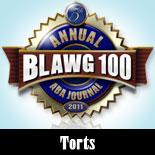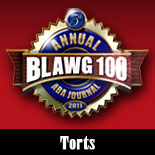Twelve Years Later: 9/11 and Lawyers
It’s the anniversary of that awful day, and as usual, it prompts some level of reflection. Twelve years later, I wonder what it must have been like for practicing lawyers on that day. For example, a Westlaw search of state and federal cases for the term “September 11, 2001” produces more than 6,600 results, and of the first ten, several concern events unrelated to the terrorist attacks which just happened to occur that day. Surely, in these fifty states, there were trials, depositions, hearings, roster meetings, worker’s compensation proceedings, and the like, which were all initially scheduled for that day but ultimately cancelled or otherwise disrupted as a result of the news. (I can’t even fathom what it must have been like for those practicing law in New York City or Washington, DC that terrible, terrible morning). But for the lawyers in the rest of the country, are there transcripts of hearings where practitioners and jurists and deponents are discussing these events on the day that they happened? How many records exist detailing proceedings that were abruptly cancelled or postponed as a result of the news, and what was said? How many depositions were noticed for that day, and how many of those actually took place? Did previously scheduled hearings for that day – which began well after the news – continue onward? Did courtrooms and courthouses attempt to persevere or allow themselves the day to monitor and attempt to process the day’s sad news? Or did security concerns prompt the cancellation of most public hearings? I’m sure each of our offices has evidence of such things, as most lawyers planned to go about that like any other before they heard the news. That day, I was not yet a lawyer. I was a 3L at Baylor Law School in Waco, Texas, and as I noted in a previous post, the building had no television that morning:
In the autumn of 2001, the new law center was immense, immaculate, and quite simply, amazing. So new was the building, in fact, that there were no televisions in the public areas of the building on September 11, 2001. Many students sat in the student lounge by the radio, of all things, listening to the news in the same way people must have on December 7, 1941.
In fact, we began class that morning without a meaningful understanding of what had just occurred. I can remember walking down the stairs from the second floor of the building to the student lounge when a friend rushed up to me and told me what had happened. Our classes were not officially canceled, but we spent most of that day in class discussing the frightening ramifications of what had just occurred that day. During a break, I can recall finding my way into the law review office and attempting to access some news website – any news website – to learn more about the attacks. However, the Internet was so slow that day – brought to a halt by all the other users doing the same thing – that I could find little of value.
Thinking back to that day, I wrote to my old friend and classmate Eric Nordstrom, who was with me in class on 9/11. Nordstrom serves as Baylor Law’s unofficial historian, and he now practices in Houston. In a recent email to me, he shared his own memories of that day:
We started Practice Court at 8:00 a.m. AA Flight 11 had hit the North Tower minutes before that. I remember the murmurs before class started that a small plane had hit the World Trade Center, but none of us had any idea of the magnitude of the events unfolding in New York, DC, and Pennsylvania that morning. I don’t believe [Practice Court professor William] Underwood even addressed it . . . .
As we’d soon learn, UA 175 subsequently hit the South Tower, which fell before class was over.
When we broke from Practice Court, everyone went to the lounge. The law school had just opened its new facility, and it hadn’t yet installed televisions. There was an old-school TV on a media cart someone had wheeled in. I recall antenna wire taped to the windows for reception. No wifi, no Internet, and no smartphones. We had a few moments to try and digest the news through the grainy local Waco TV broadcast. I ducked outside and called my father’s secretary to make sure he was on the ground. Thankfully, he was.
We started Evidence at 10:30 central time. Professor Gerald Reading Powell, resplendent in his customary three-piece suit and pocket watch, had the heavy burden of addressing the class. He began by stating that some people were asking him if he intended to cancel class. I’ll always regret not transcribing his response. The gist of it was something along the lines of “if I do that, then whatever these people hoped to accomplish has worked,” but it was delivered much more powerfully than I could ever hope to muster under such circumstances, even now. I remember not so much the words, as a palpable sense of patriotism that permeated his remarks. I like to think we all felt the same feeling that morning, and were all moved to similar degrees by Powell’s words which, given the limited time, must have been delivered extemporaneously. It was a tremendous speech, by the end of which most of us would have moved heaven and earth, much less sit through an evidence class, so that we might do whatever small part we could to stand against those who would sow such destruction.
Then, after Powell had sufficiently kindled our patriotic fervor, and we set about the day’s instruction — he called on me.
Memory is a funny thing. I don’t remember there being a television in the lounge at all, but Nordstrom recalls “an old-school TV on a media cart someone had wheeled in.” Perhaps it arrived later in the day.
On February 9, 2002, at a Baylor Law graduation ceremony, Professor Powell gave a notable speech on the post 9/11 world, which we previously referenced here on this site. A representative excerpt:
You can no longer focus on just yourself, on your career, or even on just your own family. More will be asked of you. As Americans, and especially as lawyers, you will carry with you great responsibilities. After September 11, each of you must be willing to stand guard over our liberty, to serve your country selflessly, and, if the need arises, be a hero.
…
Each of us must take our turn as sentinels. And as lawyers we have our own post to man. Our watch is over the Constitution. Our perimeter is the outposts of liberty. Our weapon is the law. Our mission is to see that justice is done.
…
[W]e also hope that each of you will have inside of you that seed of heroism perhaps dormant until a moment of truth, when it will spring forth in the energizing light of adversity to give us the hero we need. And until that time comes, or whether it ever comes, we hope and pray that you will act heroically in the conduct of your everyday lives, professional, public and personal.
It’s difficult to believe it has been twelve years.
To read our post on the tenth anniversary of September 11, please see here.


















